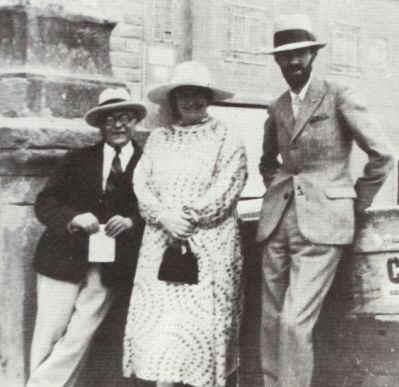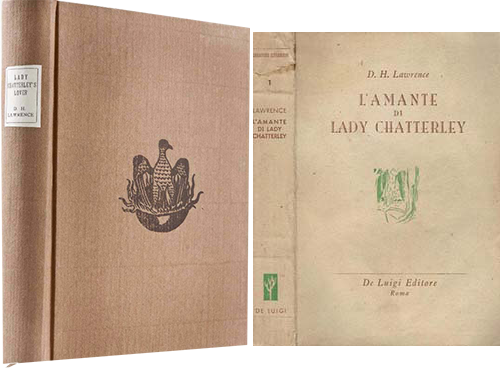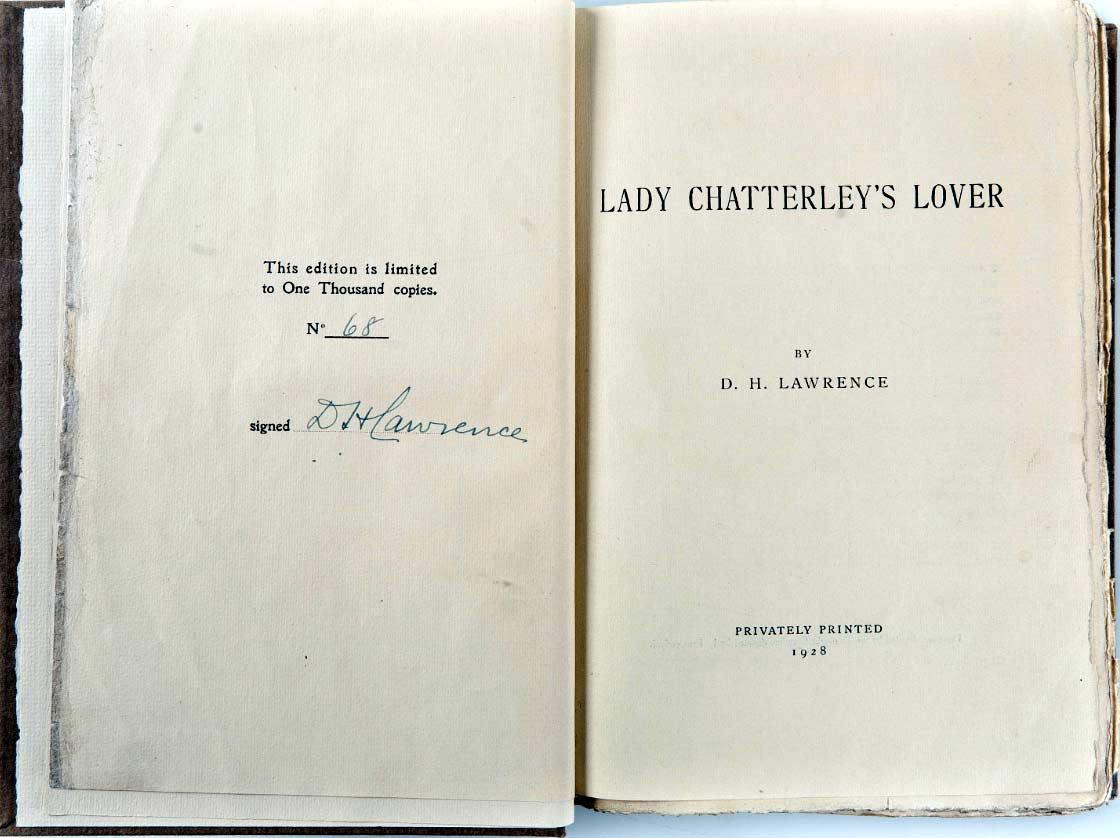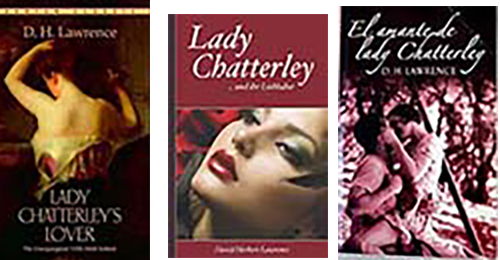 From left: Pino Orioli, Frieda and Lawrence at Villa Mirenda in Scandicci in 1928
From left: Pino Orioli, Frieda and Lawrence at Villa Mirenda in Scandicci in 1928
 hard cover in a dark red tone Cover of the first Italian edition
hard cover in a dark red tone Cover of the first Italian edition
imprinted with the image of a phoenix
that rises into flight from a nest full of
flames, drawn by the writer himself..
 Print run of one thousand signed and numbered copies
Print run of one thousand signed and numbered copies
“LADY CHATTERLEY'S LOVER”
was one of the most famous and engaging novels of the twentieth century. Innovative but too provocative, profoundly moral, but excessively 'immoral' for the public of the 'grey Puritans' and timid right-thinking people of the time, so much so that his official publisher informed him that it was not even conceivable that such a novel could be presented in England, even if 'purified' of the most daring erotic scenes. From left: Pino Orioli, Frieda and Lawrence at Villa Mirenda in Scandicci in 1928 Resolute and firm in the idea of publishing the original, complete version of his novel which offered a vision of the body and desire never outlined before with so much intensity and sensuality, D. H. Lawrence accepted the advice of his old friend Pino Orioli, owner of a small antiquarian bookshop on Lungarno Corsini, in Florence, to print it privately. Thus, towards the end of that June 1928, at the Giuntina typography, one of the most extraordinary novels of the twentieth century could finally see the light - in a thousand signed and numbered copies - printed on ivory-coloured paper and bound in a sober hard cover of dark red with the image of a phoenix rising into flight from a nest full of flames, drawn by the writer himself.In England the volumes sent from Italy were seized, and a press campaign was opened against the author. The frightened booksellers canceled their reservations. (The first complete version of Lady Chatterley's Lover could only be published and circulated freely in England in 1960, 30 years after the author's death) ORIOLI worked to ensure that hundreds of copies reached, from Florence, England and America evading strict customs controls, but only a few copies managed to filter onto the market, while more than six hundred were distributed on English soil. So while the public's curiosity was growing, we witnessed the proliferation of pirated copies at increased prices. Just over a month after the Florentine publication, facsimiles of the original made with the photographic system were already circulating in New York, which were also promptly reproduced in England and France by fraudulent booksellers.The first Italian edition The first Italian translation appeared in 1945, by Manlio Lo Vecchio Musti, (Dr Luigi Editore Roma) who in the introduction wrote, among other things, that he had been a faithful interpreter of the original text. In reality, things went differently. Certainly, to avoid problems with the censors, the translator avoided the literal rendering of terms used several times by Lawrence, such as to fuck, which he constantly rendered as kiss, with even involuntarily comical effects, where he ended up translating «fuck's only what you do, animals fuck" with "kissing is what you do, animals kiss." Other sexually crude terms, such as cock and cunt, were translated respectively as coda and muse, the latter term practically unknown to the Italian reader. (Probably derived from the Genoese mussa.) The translator certainly kept in mind the correct French translation by Roger Cornaz, published in 1929, but numerous errors arose from this operation. Thus, the English mouse, mouse, was translated with smile, a misunderstanding of the French souris, woodpecker, woodpecker, was rendered with pickaxe, a misrepresentation of the French pic, colliery, mine, became menaces [sic], a mistake made when translating the French mines , and freckles became flushes of redness, incorrectly translating tâches de rousseur which in French actually means freckles.As it was pointed out, there were numerous errors of this kind: room became campo from pièce, cleanliness was translated propriety from proprieté, as was inevitable in the course of time was rendered with since this had to last a long time, silly, stupid, was translated on bestial, da bête, and so on. It is surprising that a fine man of letters like Emilio Cecchi believed that the translation, which he defined as "accurate and successful", had not "backed away from those verbal audacities that exasperate censorship and the Anglo-Saxon public". After about ten years, other copies were legally printed, largely censored or modified, but only in 1959 was the original version released in the USA, after various court cases, with over 2 million copies sold in a year, while in Great Britain the ban it remained until 1960. From then on the books by Henry Miller (Tropic of Cancer) and "Naked Lunch" by William Burroughs were released.
Some covers of the book published in various countries

Taken from: What do Alfonsine and Tredozio have in common? “Lady Chatterley's lover